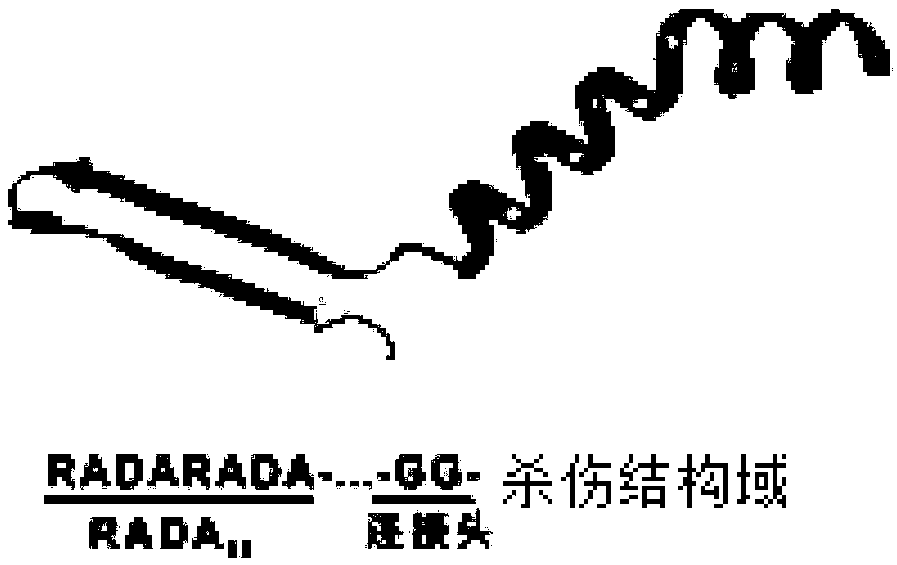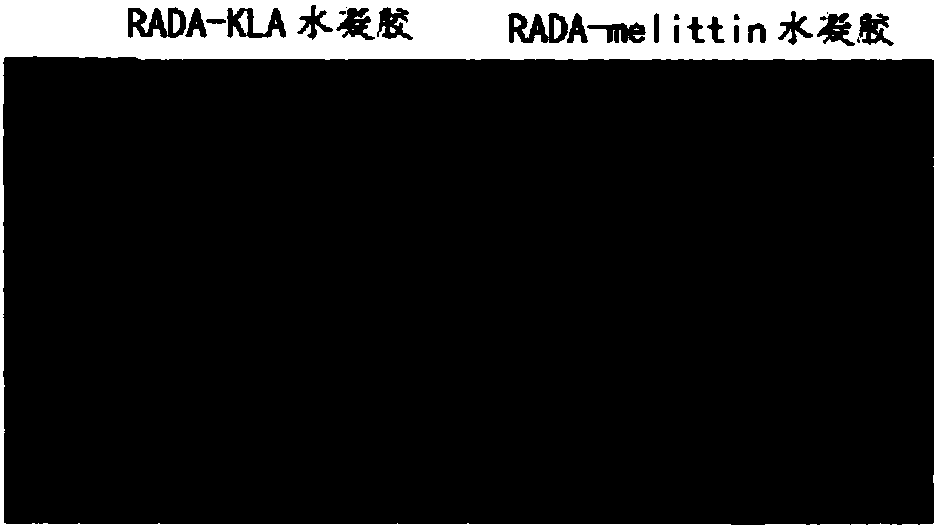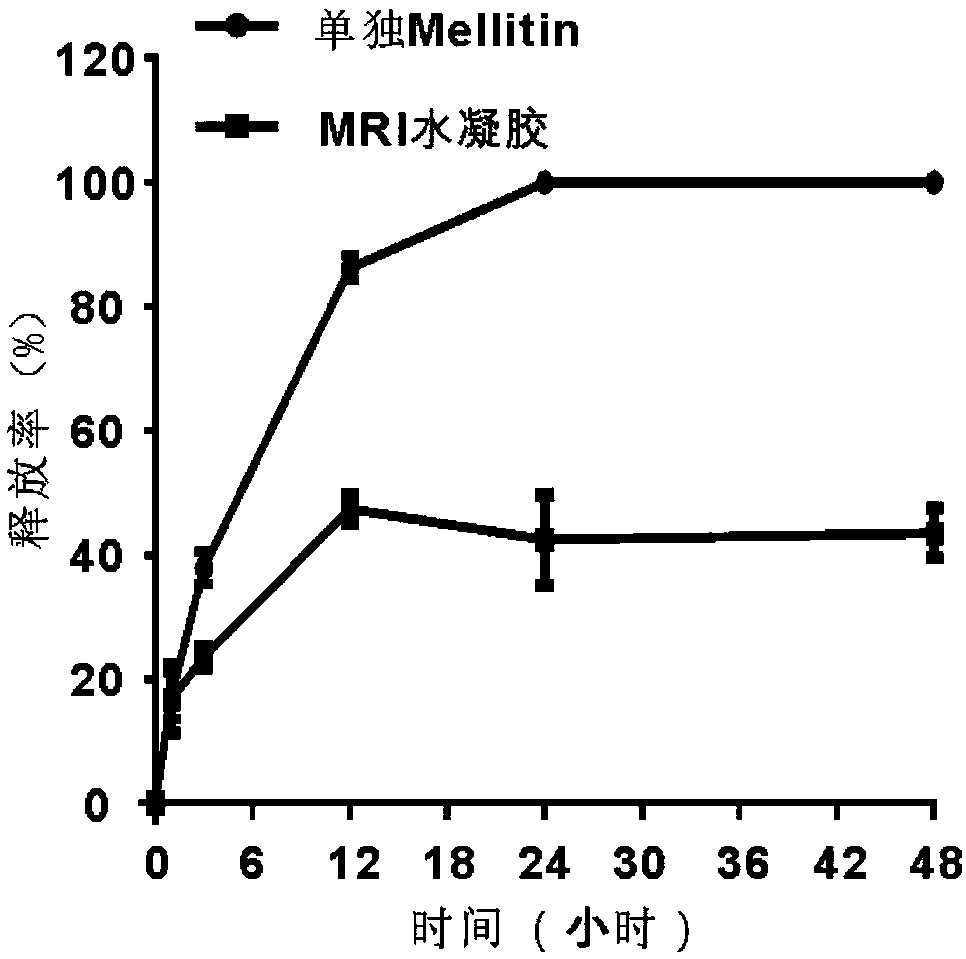Tumor killing polypeptide capable of being self-assembled into hydrogel and application thereof
A hydrogel and self-assembly technology, applied in the field of anti-tumor, can solve the problems of unstable and rapid clearance, no anti-tumor activity, and inability to self-assemble, so as to reduce physical and economic burden, reduce infection, and facilitate large-scale production Effect
- Summary
- Abstract
- Description
- Claims
- Application Information
AI Technical Summary
Problems solved by technology
Method used
Image
Examples
Embodiment Construction
[0041] The principles and features of the present invention are described below in conjunction with examples, which are only used to explain the present invention and are not intended to limit the scope of the present invention.
[0042]The inventors tested a variety of hydrogel materials including RADA16 peptides during the experiment, and found that they were not suitable for carrying killing polypeptides. The inventors tried to increase the number of RADA units. Unexpectedly, when the number of RADA units is increased to 7-9 (i.e., RADA28 peptide-RADA36 peptide), killing polypeptides can be connected to the N-terminus of the resulting peptide sequence, and hydrogels can still be formed, and The hydrogel can carry antitumor drugs. In the following, we will take the RADA32 peptide as an example to prepare some embodiments of the present invention, the structure of the tumor-killing polypeptide that can self-assemble into a hydrogel is as follows figure 1 shown.
[0043] 1....
PUM
 Login to View More
Login to View More Abstract
Description
Claims
Application Information
 Login to View More
Login to View More - R&D
- Intellectual Property
- Life Sciences
- Materials
- Tech Scout
- Unparalleled Data Quality
- Higher Quality Content
- 60% Fewer Hallucinations
Browse by: Latest US Patents, China's latest patents, Technical Efficacy Thesaurus, Application Domain, Technology Topic, Popular Technical Reports.
© 2025 PatSnap. All rights reserved.Legal|Privacy policy|Modern Slavery Act Transparency Statement|Sitemap|About US| Contact US: help@patsnap.com



